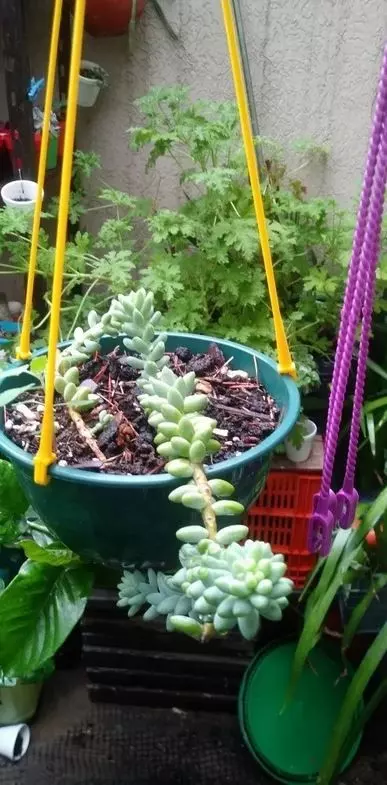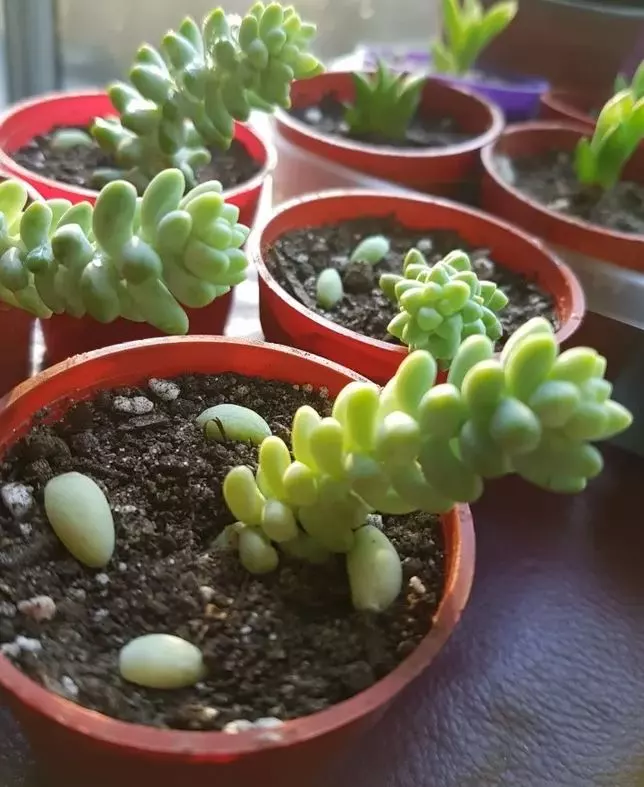The Sedum burrito is one of the most famous succulent plants because of its curious appearance – everyone wants a burrito in their collection! It is also known by the names Baby Burro’s Tail and Baby Donkey’s Tail. Learn all about Sedum burrito care in this article.
Table of Contents
Characteristics of Sedum burrito
Sedum Burrito is a succulent plant whose origin is a mystery. It was described by Reid Morgan in 1977 from two specimens raised in greenhouses, so it has no natural habitat.
The plant is practically identical to Sedum morganianum, so it is thought to be a hybrid of it.
The leaves are very fleshy, oval-shaped, bright green. Its peculiar growth causes the leaves to be configured in long clusters that hang from the plant.
It is thought that the name of the plant refers to its appearance similar to the tail of a small donkey.
The flower is small, star-shaped, reddish-colored flowers grow at the end of the “clusters” of leaves, usually during the spring.
Sedum burrito Care
Succulents of the Sedum family tolerate a wide range of conditions making them ideal for all types of locations.
Keep in mind that they will eventually outgrow their pots and will need to be moved to a larger pot to continue growing.
In general, they tolerate hot and dry climates well, even short periods of frost and temperatures below 32°F.
The most problematic thing is humidity. It is important to use a well-draining substrate to prevent the plant from rotting.

How Often To Water Sedum
Abundant watering infrequently. The substrate must be completely dry before watering again. In winter limit watering to a minimum. Avoid wetting leaves, stems, and flowers when watering.
Soil Sedum
It needs good drainage to avoid humidity.
Light Sedum burrito
It needs enough hours of light. It grows without problems with the direct sun as well as in semi-shade.
How to Propagate Sedum burrito
Plants of the Sedum family reproduce well naturally. Each “mother” plant generates “daughters” around it called offshoots.
If we separate these offshoots, we can replant them in another pot with the same type of substrate. The new plant will become a “mother” and will generate more plants.
We can also reproduce by cutting a leaf or stem at the base with a sharp knife.
After cutting the leaf or stem, we must let it dry until a callus forms in the area of the cut. This prevents it from absorbing too much moisture in the first few weeks.
Once the callus is formed, we can plant in the recommended substrate and water lightly. We only water again when the substrate is dry.
It is advisable to make these repot in spring when the plant is most active.

